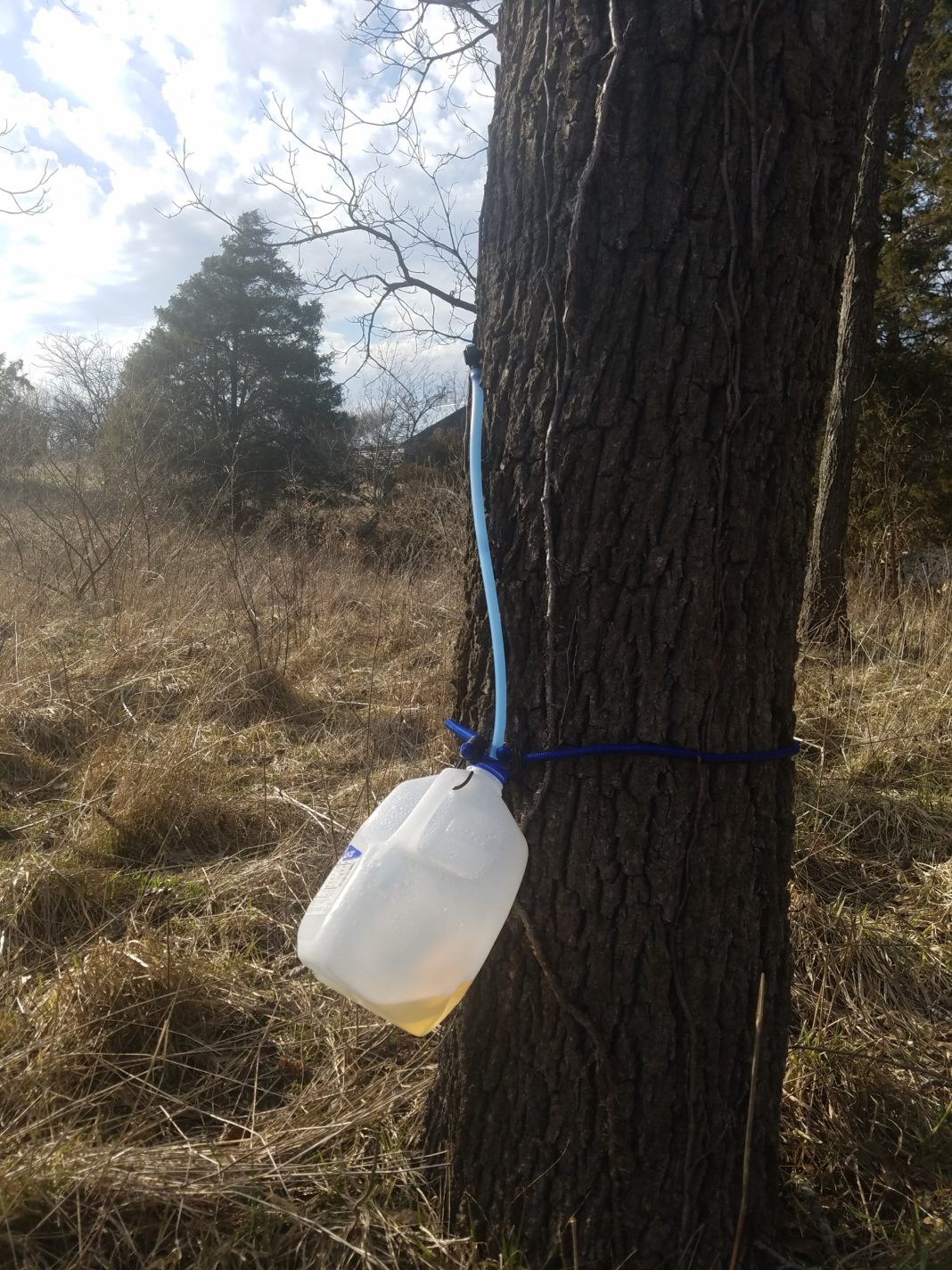Deer season has been over for a few weeks now. Spring turkey season is approaching, but not quick enough. If you are anything like me, the winter blues are beginning to take its toll. You might not live in Vermont, a state known for its pure maple syrup, but maple syrup is not that far away. It might be as close as out your back door.
It does not take many maple trees to produce enough maple syrup to supply family and friends with sweet syrup all year long. And it is probably a lot easier than you think. The supplies needed are few and can easily be obtained from large scale maple syrup producers or from the Internet.
Sugar maples are the preferred choice of trees when gathering syrup. The sap from a sugar maple contains more sugar than the sap from a soft maple, like silver or red maples. Even though the soft maples have a lower sugar concentration, they will still produce a sweet syrup. The sap from a maple is thin, water-like and clear with a slight taste of sugar. It takes about 40 quarts of sap from a sugar maple to make 1 quart of syrup, and more when the sap is from a soft maple.
To begin the process, drill a hole with a 7/16-inch drill bit 2 inches into the tree at a slight incline on the south-facing side of the tree. Clean the hole out by taking the drill in and out of the hole a few times. Now, take a spile (metal tap purchased just for this purpose), put it in the hole, and hang a clean 5-gallon bucket on the tap. If the sap is not flowing, it is either too cold or the spile needs to go farther into the tree.
It might seem that the sap is barely trickling from the tree. However, it is possible to collect as much as 5 gallons of sap from a single tree in just one day. Also, on large trees, 2 taps can be used. Do not miss a day of collecting sap, or you could end with buckets overflowing. When collecting the sap, take a very clean rubber container with handles into which to put the sap. Once the sap has all been collected, get it in a cool place (refrigerator) as soon as you can. Do not store the sap for more than 48 hours before you begin the boiling process.
You cannot have syrup without boiling the sap. No question, it is a long process, but it has to be done. I recommend having a full day to thicken the sap. If you do not get an early start, you will find yourself staying up late.
I use large soup pots to boil the sap. As you pour the sap into the pots, run it over a thin cloth placed in a strainer to remove any impurities. The same maple syrup operation you purchased the spiles from will have filter clothes for this process, as well for the straining process that will need to be done when the boiling is finished.
Unless you plan on making a lot of syrup, a kitchen stove top and one or two big pots should suffice. Turn the stove burners as high as they will go and begin the waiting game. A word of caution: Do not leave the syrup unattended on the stove. Overcooking could cause the syrup to crystallize, darken, and thicken.
As the sap cooks down, add more sap to the pot. Over time it is a good idea to move the sap to a smaller pot so it is easier to work with. Once the sap reaches 219 degrees Fahrenheit on a candy thermometer, it will have small bubbles in the boiling. The sap is now syrup. Even though it is thin, it is still syrup. Once the syrup reaches 219 degrees, remove it from the stove. Use thick felt to filter the syrup into canning jars and seal the lids tightly.
As I mentioned earlier, the spiles and filter cloth can be found on the Internet or from other syrup producers. The buckets can be found locally. Thoroughly clean the collection buckets and the rubber transport buckets to prevent bacteria growth.
Maple syrup collection only lasts for a couple of weeks. Once the trees begin to bud, maple syrup harvest and production is over for another 11½ months. All you can do until then is enjoy 100 percent pure maple syrup that you collected from those gray maple trees you have around your home.
Enjoy!



















![The Best Deer Camp Chili [VIDEO] Deer Chili Ingredients, Tomatoes, Chili Spices](/wp-content/uploads/2015/10/Deer-Chili-Deer-Camp-Recipe-218x150.jpg)
![How to Call Elk Early in the Season [VIDEO]](/wp-content/uploads/2016/08/byers003-218x150.jpg)




![Idiots Disturb Hunter: How Would You Have Handled It? [VIDEO]](/wp-content/uploads/2015/10/DSC00110-e1474487693878-100x70.jpg)
![Albino Buck Shocked to Shed His Antlers [VIDEO]](/wp-content/uploads/2015/10/AlbinoDeer-100x70.jpg)